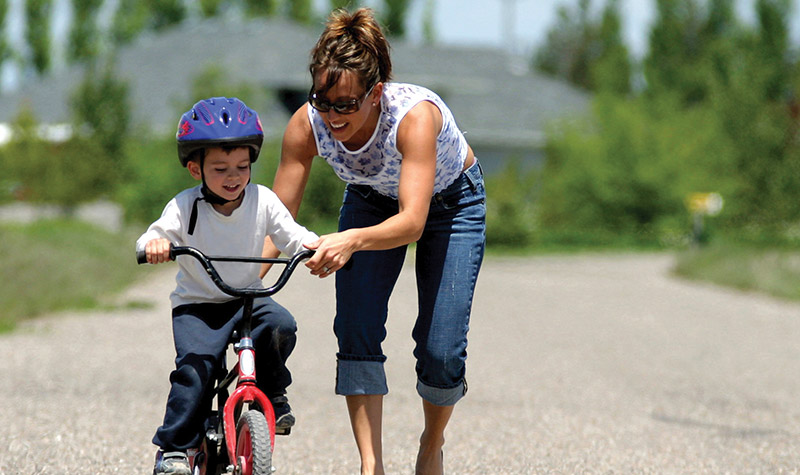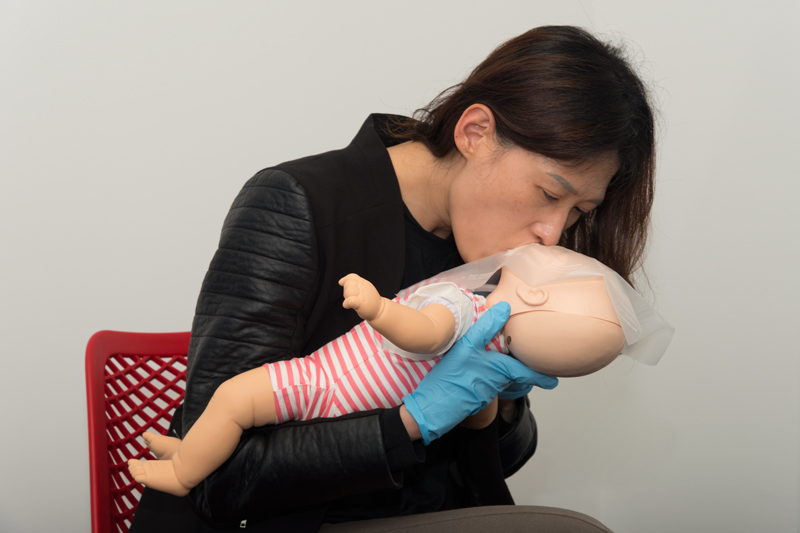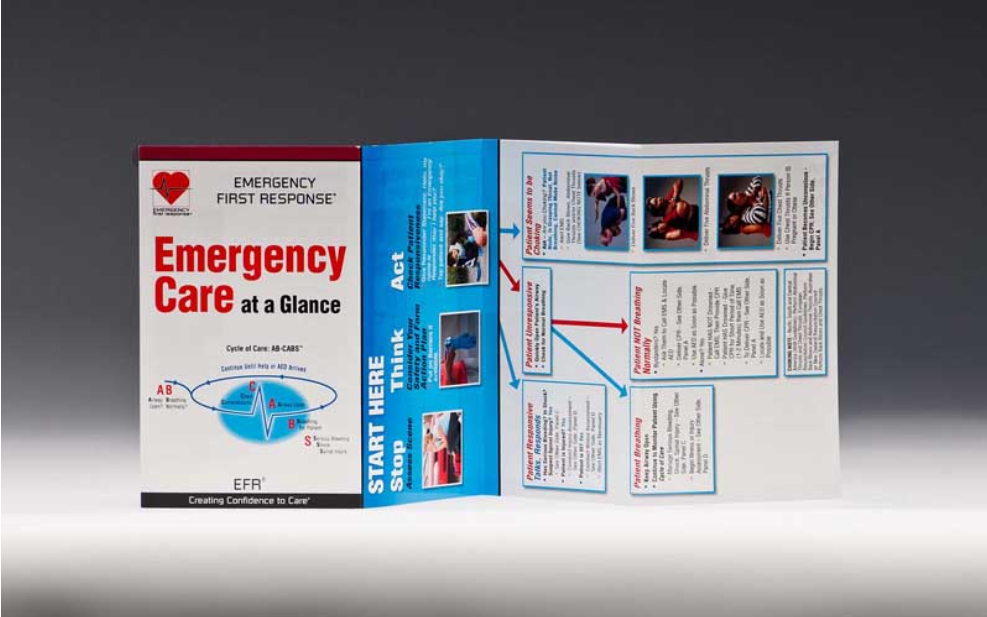Falls, burns, and accidental poisoning are some of the most common household emergencies. If one of these accidents occurs in your home, is your family prepared to respond?
Parents aren’t the only ones who should learn and practice lifesaving skills. Most school-aged children can and should learn basic first aid and CPR. When an accident occurs, they’ll be better prepared to help a sibling, parent, or grandparent.

Every Parent Should Learn Basic First Aid
The most common injuries for children include:
- burns
- choking
- drowning
- falls
- poisoning
- and suffocation
In an Emergency First Response® (EFR) class, you’ll learn how to identify and respond to the emergencies above with confidence. Our courses include hands-on practice and follow the same procedures medical professionals use to identify injuries or ailments. EFR courses also include:
- Acronyms to help parents and children remember what steps to take
- Emergency scenario practice
- Reference material for your home or personal vehicle

A CPR and First Aid Course Benefits Parents and Children
The results of a recent study revealed, 86 percent of children over the age of eight can correctly administer CPR after receiving hands-on training. Even if a child lacks the physical strength to perform CPR, they can learn how to activate emergency services and gather important information to help medical responders.
Knowing how to respond in an emergency is essential for parents as well. A European survey asked parents with children between the ages of three and seven how they would respond to different first-aid scenarios. Fewer than five percent could answer the questions correctly.
The same survey found three out of four young children are likely to be involved in accident. That’s why it’s important for your family to not only have a first aid kit, but also know how to use it. Your Emergency First Response Instructor will also teach your family how to manage injuries when a first aid kit isn’t available. For example, a t-shirt can be used to manage bleeding, and a magazine can be used to splint a fracture.
Family time is important, but it can be a challenge to find an activity that’s engaging for everyone. Learning how to help each other in an emergency can be a great way for families to bond and gain valuable skills.
Why Choose Emergency First Response
The Girl Scouts of America, Scouts UK, OSHA, The Health and Safety Executive of Great Britain and Northern Ireland, and many others recognise EFR’s training. Our first aid courses follow the same procedures used by emergency medical professionals and our CPR classes adhere to the guidelines outlined by the International Liaison Committee on Resuscitation (ILCOR).
EFR courses include:
EFR Primary Care CPR course – with or without AED training.
EFR Secondary Care (first aid training)
EFR Care for Children
Courses may be combined or taught separately to fit your family’s schedule. We also offer first aid and CPR refresher training.
EFR Instructors focus on helping students master their skills in a non-stressful learning environment. For more information, or to schedule a class, contact an EFR Instructor near you.
Further Reading:
Kids Save Lives
10 Reasons Parents Should be CPR and First Aid Certified
Common First Aid Myths



